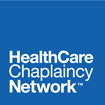Caring for the Human Spirit® Conference 2020 Presentations
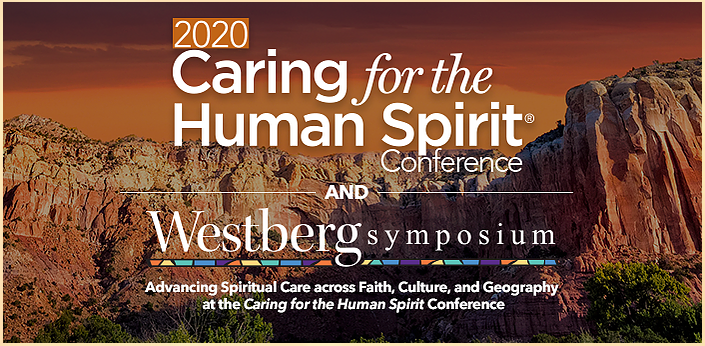
Day 1 – Monday, April 20, 2020
GRANGER WESTBERG KEYNOTE ADDRESS
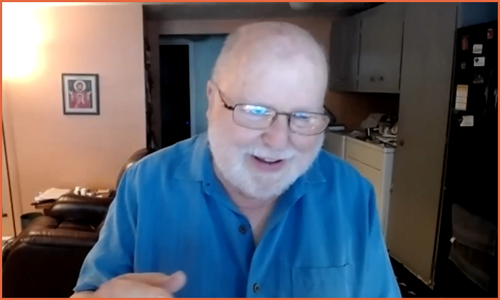
Fr. Richard Rohr, OFM
Center for Action and Contemplation
Tracking the Perennial Tradition Creates an Alternative Orthodoxy
What does spirituality teach us, demand of us, in the midst of difficulty? Is it a benevolent universe, or a dangerous and scary place? There is not a simplistic answer.
In religious and wisdom traditions, there are several examples with different languages and different words. Picture 3 boxes: order, disorder, and reorder.
- Order: We begin with almost entirely tribal thinking, mirroring the individual journey, which starts with an egocentric need for “order” and “self.” With order comes predictability. Only gradually do we move toward inclusive love.
- Disorder: Something happens that disrupts our orderly lives. We slowly recognize the invitation to a “face to face” love affair through the biblical dialogue of election, failure, sin, and grace, which matures the soul. This is where we need wisdom teachers to guide us through our “disorder.” If we resist the disorder of suffering, if we try to blot it out or numb it, we stay stuck. We don’t grow.
- Reorder: Among a symbolic few, there is a breakthrough to unitive consciousness (for example, figures like Abraham and Sarah, Moses, David, the Psalmists, many of the prophets, Job, Mary, Mary Magdalene, Jesus, and Paul). This is also what some call enlightenment or salvation. Only in the final “reorder” stage can darkness and light coexist, can paradox be okay. We are finally at home in the only world that ever existed. This is true and contemplative knowing. Here death is a part of life, failure is a part of victory, and imperfection is included in perfection. Opposites collide and unite; everything belongs.
How do you hold on the best of each of these?
Can you put together the best of each box, holding together the paradoxes until they begin to harmonize and teach? It is by struggling that one comes to consciousness of the spiritual.
Richard Rohr. Things Hidden: Scripture as Spirituality, SPCK Publishing. 2016. ISBN-13: 978-0281075164.
Richard Rohr. Just This: Prompts and Practices for Contemplation, SPCK Publishing. 2018. ISBN-13: 978-0281079919
PLENARY
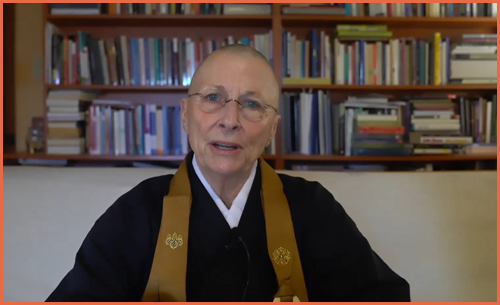
Roshi Joan Halifax, PhD.
Upaya Institute and Zen Center
Compassion and Challenges in Chaplaincy: A Perspective on Caring Interactions
During this pandemic, chaplains are a bridge between the patient and the families who cannot be at the bedside, and bear witness to the life of the person who does not survive. During this time a deep grounding of compassion is essential, which is what chaplains bring.
Presence, the ability to provide active compassion in the moment, especially when there is deep suffering, is one of the greatest gifts of chaplaincy care. “May I offer my care and presence even in the midst of anguish.”
Another quality of compassion is the development and deepening is the ability to create genuine concern for others. This means being aware of the voice inside oneself that is not in connection with others and committing to developing genuine concern followed by loving action.
Discern what will serve others, based in looking deeply from the point of empathy and our capacity to sit with uncertainty and humility to look for the unseen, the unknown, and the unknowable. This is clinical humility. Based on our capacity to be fully present to the suffering of another, compassion arises, and action follows.
Challenges to chaplaincy in the midst of the pandemic:
- The Edge State: Virtues in ourselves that make it possible for us to give service to others. The edges refer not only to essential human qualities for oneself, others, and society. They also have shadow aspects.
- One of the most common virtues to be actualized is altruism. Its shadow is pathological altruism, where the person themselves, those they care for, or the institution they served are harmed physically, emotionally or spiritually. For those working in the mist of the current pandemic, the challenges can be great especially for one’s own self-being. “May I see my own limits with compassion, just as I view the suffering of others.” We often underestimate our capacities. It is always a balance to understand our own limits.
- Empathy: Connectedness with others and able to look through their eyes knowing at the same time we can’t really know what another is experiencing. Shadow Edge: Experiencing vicarious suffering or taking on the pain and suffering of others. Need to be able to uphold ourselves, with a positive spiritual and emotional balance, to draw upon our own resources to be present and part of a team.
- Moral Suffering:
- Moral distress rises when we are aware of a moral dilemma and we are unable to resolve inner turmoil regarding it, i.e. allocation of resources (medical, social, time).
- Moral injury is a psychological wound resulting from participating or witnessing a morally challenging act. Moral injury becomes cumulative.
- Moral outrage is an externalized expression of indignation towards others who have violated social norms; includes both anger and disgust. Can lead us to demand injustice and accountability. It can also become chronic as a state of self-righteousness and shaming/blaming others.
- Moral apathy is ignoring the suffering of others, especially those we are to serve. It can arise s in response to our environmental situation, for example the ways in which the current pandemic impact that that we know as familiar. Part of our work as chaplains is to bear witness to that which has occurred. The edges states remind us that we all have challenges, times when we feel inadequate, or face suffering day in and day out. The key to transforming these challenges into benefits is to actualize the capacities of compassion. It is grounding ourselves in grace to recall our intentions for our work as a calling.
Chaplaincy is the work of developing moral character, to stand within the values and principles that will serve the greater good. It includes moral sensitivity to identify the moral contours of situations we find ourselves in to engage in compassionate actions and service to others.
- Gathering attention
- Recalling intention
- Attuning to self and other
- Considering what will serve
- Engaging, enacting, ending
Joan Halifax. Standing at the Edge. Flatiron Books. 2019. ISBN-13: 978-1250101358.
Joan Halifax and Ira Byock. Being with Dying: Cultivating Compassion and Fearlessness in the Presence of Death. Shambhala, 2009. ISBN-13: 978-1590307182.
Day 2 – Tuesday, April 21, 2020
PLENARY
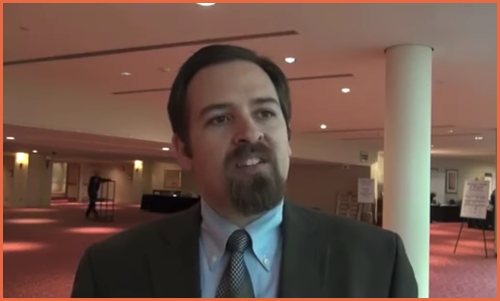
Bryan Sexton, Ph.D.
Director of the Duke Center for Healthcare Safety and Quality
Duke University Health System
Thriving vs. Surviving During Times of Change: The Science of Enhancing Resilience
Why do we need individual and institutional resources on health care worker well-being?
- Physician burnout costs 4.6 billion dollars a year – add in nursing and allied health
- We know that what is being done, i.e. workplace wellness programs, aren’t working. No differences in clinical measures of health, spending, utilization, or employment outcomes after 18 months
- Has a profound impact on clinical outcomes and quality regardless of how well-being is measured
- Bryan Sexton. Evidence Relating Health Care Provider Burnout and Quality of Care: A Systematic Review and Meta-Analysis. Ann Intern Med. 2019.
Our well-being behaviors are influenced by others in ways we notice as well as those we don’t.
- Sexton B. Work-life balance behaviours cluster in work settings and relate to burnout and safety culture: a cross-sectional survey analysis. BMJ Qual Saf. 2019.
- Work-life behaviors tend to cluster at the work site.
- Sexton B. Providing feedback following Leadership WalkRounds is associated with better patient safety culture, higher employee engagement, and lower burnout. BMJ Qual Saf. 2018.
- Burnout has a social contagion
- So does resilience
Psychology of Burnout
- Your focus and your reflections determine your reality.
- Burnout trains you to look for the bad stimuli and miss the good.
- Emotional information processing depression and burnout: an eye-tracking study. Bianchi R. Eur Arch Psychiatry Clin Neurosci. 2015.
- Psychological language on Twitter predicts county-level heart disease mortality. Eichstaedt JC. Psychological Science. 2015.
- Danner D. Positive emotions in early life and longevity: Findings from the nun study. Journal of Personality and Social Psychology. 2001.
- The nuns who expressed more positive emotions lived, on average, a decade longer than their less cheerful peers.
Burnout is associated in healthcare with:
- Lower patient satisfaction
- Higher infection rates
- More medication errors
- Higher standardized mortality ratios
Burnout is what happens when it gets really hard to notice something funny, interesting, or amazing. At its core, burnout is the impaired ability to experience positive emotions.
- Fredrickson BL. The undoing effect of positive emotions. Motiv Emot. 2000.
TOOL: Three Good Things. How do you recharge positive emotions?
Background studies:
- Emmons RA. Counting blessings versus burdens: An experimental investigation of gratitude and subjective well-being in daily life. J Pers Soc Psychol. 2003.
- Seligman M. Flourish. A Visionary New Understanding of Happiness and Well-being. Atria Books. 2012. ISBN-13: 978-1439190760
Three Good Things adapted for health care workers:
- Sexton B. Forty-five good things: a prospective pilot study of the Three Good Things well-being intervention in the USA for healthcare worker emotional exhaustion, depression, work–life balance and happiness. BMJ Open. 2019.
- Sexton B. A qualitative analysis of the Three Good Things intervention in healthcare workers. BMJ Open. 2017.
- Roberts P. Three Good Things: Build resilience and improve well-being. 2018. American Nurse Today.
We are hard wired to remember the negative.
Reflecting on the positive leads to noticing more positive.
With practice (by day 4 or 5) reflecting on the positive leads to noticing more positive.
One Easy Step Toward Building Resilience. Duke Today. 2018.
Three Easy Ways to Find Your Resilience. Duke Today. 2020.
Resilience Tools. Duke Patient Safety Center.
- Who Healthcare workers 18 and older are eligible.
- What The resilience tools are evidence-based, interactive, and specifically designed for busy healthcare workers. Interventions last between 3-15 days. Participants will receive prompts for the tools via email or text message.
- Why Burnout impacts 1 out of 3 healthcare workers, and there are simple tools that help individuals recover from burnout. Participation in these tools will potentially enhance your own well-being, and the well-being of your co-workers and patients. Participation will contribute to research on interventions for healthcare worker burnout.
Link to Enroll in Three Good Things Study: bit.ly/start3gt
Three Good Things 3-minute video Bit.ly/3gtdemo
One hour continuing Education credit from Duke for this webinar: Bit.ly/threegt
PLENARY
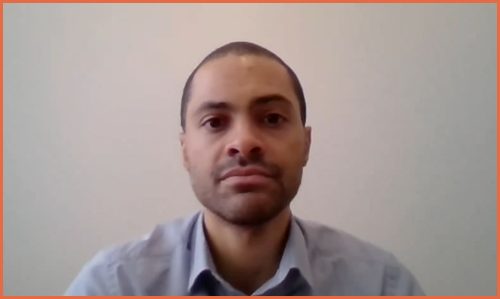
Chaplain Jason Callahan, MDiv, MS, BCC.
Thomas Palliative Care Unit at Virginia Commonwealth University Massey Cancer Center and instructor for the Departments of Patient Counseling and Pastoral Care at VCU
Bridging the Divide: Chaplaincy in the Secular Age
Growing Divides:
Economic
- Millennial generation considered to be the first generation with lower opportunity for financial success than their parents
- Having a career is seen more from an entrepreneurial lens than as an employee
- Less available money to support non-necessities
Political
- Millennials are more liberal leaning, importance of social justice more important than traditional views on gender, religion, race relations, policy, etc.
Spiritual vs Religious
- Millennials are in search of a spiritual system that affirms who they are in a world without persecution or shame
- Looking for community that does not require adhering to system of beliefs but allows the diversity of it
- Seeing scandal around clergy persons and predatory behavior. Not seeing themselves reflected in the leadership and not expecting that to change
Language
- Seeing mental health issues increase and the language around it change
- Segregated settings use vernacular specific to their context
- Not to say they weren’t there in previous generations, but are becoming more visible
Vocational Calling
- Increased sense of pressure particular for middle-class education millennials that work should be about meaning and purpose, should be a calling, and doing something meaningful with life to make the world a better place
- Experiencing a “calling”; want meaningful work
Tribal Orientation
- Easier to be around people that look like you, act like you, speak your language, prefer foods you eat, and have your back the way you want because of an affiliation base upon cooperative experience
- Social media makes it easier to find your tribe
- Knowledge of the world is derived by observation, experimentation, and rational analysis
- Human are an integrated part of nature
- Ethical values are derived from human need and interest as tested by experience
- Life’s fulfillment emerges from individual participation in the service of humane ideas
- Humans are social by nature and find meaning in relationships • Working to benefit society maximizes individual happiness
Communities:
Professionals
- Chaplain represents Humanist values and principles in all settings; helps make meaning; understanding the views of others and providing them with the service they need
- Human Celebrants create and conduct humanist-oriented life-celebration services that are custom-made to honor the uniqueness of those involved.
Questions
Chaplain or Spiritual Care Provider/Spiritual Care Practitioner?
- Hold on to tradition of “chaplain” because of holding on to history/values or use different language that does not have boundaries, i.e. religion.
- Or “take back” word of chaplain and recreate/reframe it based on what a professional chaplain does, i.e. not imposing a particular religious belief system
Chaplaincy Training
- Education/Seminary or Graduate School: Be open to those outside your belief system
- Clinical Training (CPE): Open to diversity
- Certification: Endorsement issues if required from a religious community; open doors to other certifying organizations for diversity, mentoring, encouraging
What do you do when a patient asks specifically for a prayer and what would be a ritualized title for prayer in the humanist language?
- As a humanist, accepted prayer as a helpful tool in chaplaincy contacts; have seen the results of its use to support someone’s belief system
- Prayer creates an opportunity for someone to express themselves and a Humanist chaplain can be a part of that
What happens at the bedside when the patient/family is religious
- Always make sure “it’s not about me”; it is about the person before you and the support the chaplain provides
What would be a non-faith-based ritual that you would provide for secular end of life with families?
- Focus on the person as he/she is, not as God/Divine sees him/her and be adaptive
What does it mean for a human being to be emotionally/spiritually healthy or well regardless of one’s tradition or beliefs?
- Strong self well-being, including being surrounded by a supportive community in whatever manner brings a sense of belonging.
How to reach out to build a relationship with Humanist community?
- Go to American Humanist Association website and look for community location
- Be present at some of their gatherings; tend to gather more around issues and how to engage around them than traditional religious services
- Get literature from AHA website or local community to understand beliefs and community offerings
- Find out what humanist communities’ health care needs are and how they can be addressed
Day 3 – Wednesday, April 22, 2020
PLENARY PANEL
Building Resilience: Programs that Work
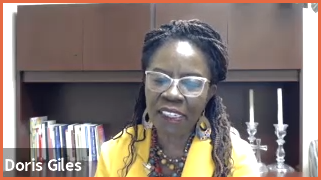
Doris Giles, RN-BC
Faith Community Nurse Coordinator, Methodist Health System
Building Resilience requires
- Plan, Implement, Nurture, Evaluate
Program: (Hospital based with congregational parish nurse programs)
- Began in 1996 with 6 partnering churches, now 67 partnering faith communities
- Part of the outreach of Methodist Health System
- Work with Spiritual Care Association for education
- Assessment tool: Model for Healthy Living
- Mission statement
- Covenant of agreement and responsibilities
- Quarterly network meetings
- Quarterly individual meetings with each nurse
- Annual pastor/faith community leader church dinner
- Connect partners to local, national, and international resources
- Opportunities to demonstrate program resiliency “for such a time as this” (COVID-19) education, resources, and programs/outreach to one’s faith community members
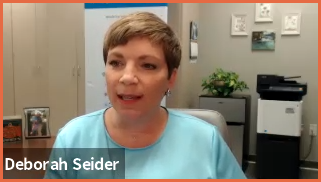
Deborah Seider, RN-BC
Faith Nursing Coordinator, Methodist Health System
Documentation System: Henry Ford Macomb Hospitals Faith Community Nursing/Health Ministries Documentation and Reporting System
Needs that were identified in Faith Nursing program:
- Partnering faith community nurses and health ministry liaisons
- Unpaid model
- Over functioning
- Overly responsible
- Boundary issues – how to say “no”
- Duty, service, obligation, guilt
- Trying to be a good person of faith
- Desire to please others
Desired outcomes
- Support and retain partnerships
- Prevent compassion fatigue
- Prevent burnout
- Build health relationships
- Sustain engagement in community
Reflection, Examination, Motivation, Change
- Our theology – what do we really believe?
- Our behavior and choices – are they consistent with our theology?
- Our motivations – why do we do what we do?
- Expectations – whose are most important and why?
- Examples: getting needs met; recognition, reputation, image; fear of conflict; being disliked, underappreciated, not being needed; not being the hero, being sinful, displeasing the pastor/faith leader, congregation, family, God
What will it take?
- Process isn’t easy of obvious
- Complexity
- Change takes time, practice, repetition
- Difficult changes need reinforcement to solidify the new reality
- Multi-tiered approach
- Year-long focus
Specific Program to Build Resilience
- Boundaries: When to say Yes, How to Say No and Take Control of your Life. Henry Cloud and John Townsend. Zondervan. 1992. ISBN-13: 978-0310247456.
- Workbook
- Purpose: Integrate the concepts and application in all aspects of our program; create a health program culture; build health and resilient nurses and liaisons
- Reading/study groups based on geography with group leaders, reading schedule, supplemental discussion questions, complete reading by April meeting where concepts were the focus to debrief
- Integration: Leadership with vulnerability, assigned topics for quarterly meetings, individual meetings, free weekly Boundaries blog subscription link, specific YouTube links
- Highlighted at annual Pastor/Community Faith Leader and Nurse Dinner; speak directly to leaders that at times the faith culture has boundary issues and encouraged pastors/leaders to develop health boundaries. Served as a voice for nurses and liaisons
- Struggles: Some partners created their own boundaries and chose not to read the book or participate; cannot make any of the partners do anything but can set program/system boundaries and communicate expectations related to our boundaries; many boundary issues are built in to faith cultures and norms so setting boundaries can be risky for persons
- In the end program is worth it! Rules and structure; decreases conflict; vocabulary for relationships, healthy expectations; limits, responsibility and ownership; negotiation; trust and integrity
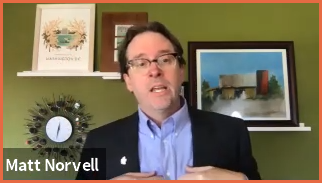
Matt Norvell, MDiv, BCC
Pediatric Chaplain, Johns Hopkins University
RISE (Resilience in Stressful Events): Providing support to clinicians who encounter traumatic patient-related events
Caring for the Caregiver program: How to bring the program to your hospital
Built specifically to provide emotional support to employees who work in the hospital.
- Medical Errors are No. 3 Cause of US Deaths
- Medical Error: The Second Victim. Albert Wu, MD
- First Victim: Patients and Loved ones
- Second Victim: Health care providers who are involved with a patient-related adverse event or medical error, and as a result, experience emotional and sometimes physical distress.
- Feel personally responsible for the outcome
- Feel as though they failed the patient
- Question their knowledge and competence
- Institutional and Individual Costs
- Absenteeism, presenteeism, team dysfunction, increased turnover, $$$, patient safety risks, employee safety risks, employee personal dysfunction, moral distress, etc.
The RISE Team: A timely, confidential, non-judgmental, peer-to-peer support program for employees who have experienced a stressful patient-related event.
Continuum of Care
- Psychological First Aid
- Crisis Intervention
- Counseling
- Psychotropic Meds & Psychotherapy
Caring for the Caregiver: Maryland Patient Safety
Joint Commission Quality Safety Issue 30: Supporting Second Victims
Edress H, et al. Implementing the RISE second victim support programme at the Johns Hopkins Hospital: a case study. BMJ Open. 2016.

